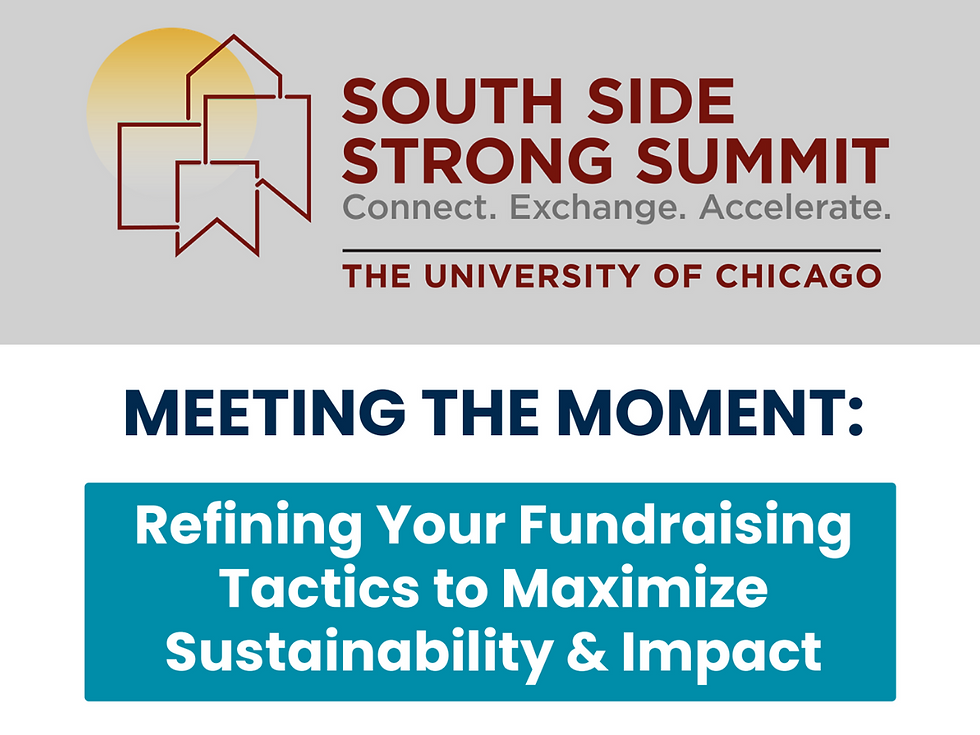When 1+1+1=5: Grant Partnerships for the Greater Good
- Kristin Raack

- May 6, 2024
- 3 min read
Kristin Raack, Principal at AltruNext, was recently featured as a guest author about maximizing the impact of grant partnerships. The full article was originally published by Grant Professionals Association on GrantProfessionals.org and reprinted here with their permission.
Collaboration. Partnership. Cooperation. Leveraging community relationships and resources.

As grant professionals, we know these are more than buzzwords: they are essential nonprofit values, proven strategies for successful grant-seeking, and the means to improve outcomes for those we serve. However, the process of building appropriate alliances and collaborating on grant proposals can seem intimidating or even risky. Ideas and priorities may conflict. Partner roles and responsibilities can be unclear. Not to mention that sharing money can be fraught. Is it worth it?
I’d argue that the choice is clear: partnerships are essential because they benefit our communities and are encouraged by grant funders. Too often a scarcity mindset has kept nonprofits from seeking creative affiliations. But, as funders review numerous applications from organizations with similar missions, target audiences, and geographies, they see opportunities to join together and maximize impact. As grant professionals, shouldn’t we be exploring collaborations before submitting grant proposals?
Cooperation brings numerous benefits to communities, organizations, and people served. These often include:
Increased access to funding, especially new funders and/or larger grant amounts;
Expanded reach—geographically or with new target audiences—as organizations introduce each other to their existing participants; '
Greater expertise and ability to address complex problems because each partner brings their unique skills and program experience to the table;
The ability to provide an enhanced continuum of services to the community;
Greater efficiencies due to the reduction of overhead or administrative costs; and
Enhanced credibility with funders and/or the target community based on existing trust in the community, special qualifications, or previous funder relationships.
There are myriad types of partnerships—from quite casual to formal legal agreements. No one size fits all. Consider what type of relationship is appropriate for your situation.
Your nonprofit may participate in associations, networks, or coalitions that convene to share ideas, make referrals, and find creative means to address community service gaps. You might pursue a partnership with a subcontractor or subrecipient related to a specific funding opportunity. When a program collaboration is successful, you can go deeper to formalize your joint programming. To affect systems change, a collective impact model may be the best fit: a long-standing partnership with shared data collecting and metrics, deep coordination of activities, and centralized infrastructure through a backbone organization. At some point, your organization might decide a legal merger is necessary to formalize and maximize the benefits of a joint venture. This option is becoming increasingly common in the nonprofit sector, as there are efficiencies of scale and opportunities for greater impact.
But, whatever the form, these strategic alliances can be powerful catalysts for growth and impact. Prominently feature your strategic alliances in your grant proposals. As examples, consider these noteworthy partnerships that received grant funding:
A city that deployed state grant funds to provide free training to local nonprofits about grant writing best practices;
A backbone organization used foundation grants to benefit more than 70+ organizations in a collective impact model;
An FQHC (federally qualified health center) and mental health care agency formalized their collaboration to ensure patients received referrals and timely services with the partner agency when needed;
A rural food pantry/community garden capital campaign project is building a community hub with space for other nonprofits to convene and provide direct services; and
Four small arts organizations banded together to create a separate entity to collaboratively raise funds together.
By building appropriate, strategic partnerships, your organization will advance the greater good.
Question: Have you ever applied for a grant with a nonprofit partner? Did the outcome strengthen your relationship with the funder, the nonprofit partner, and/or the community?





Comments